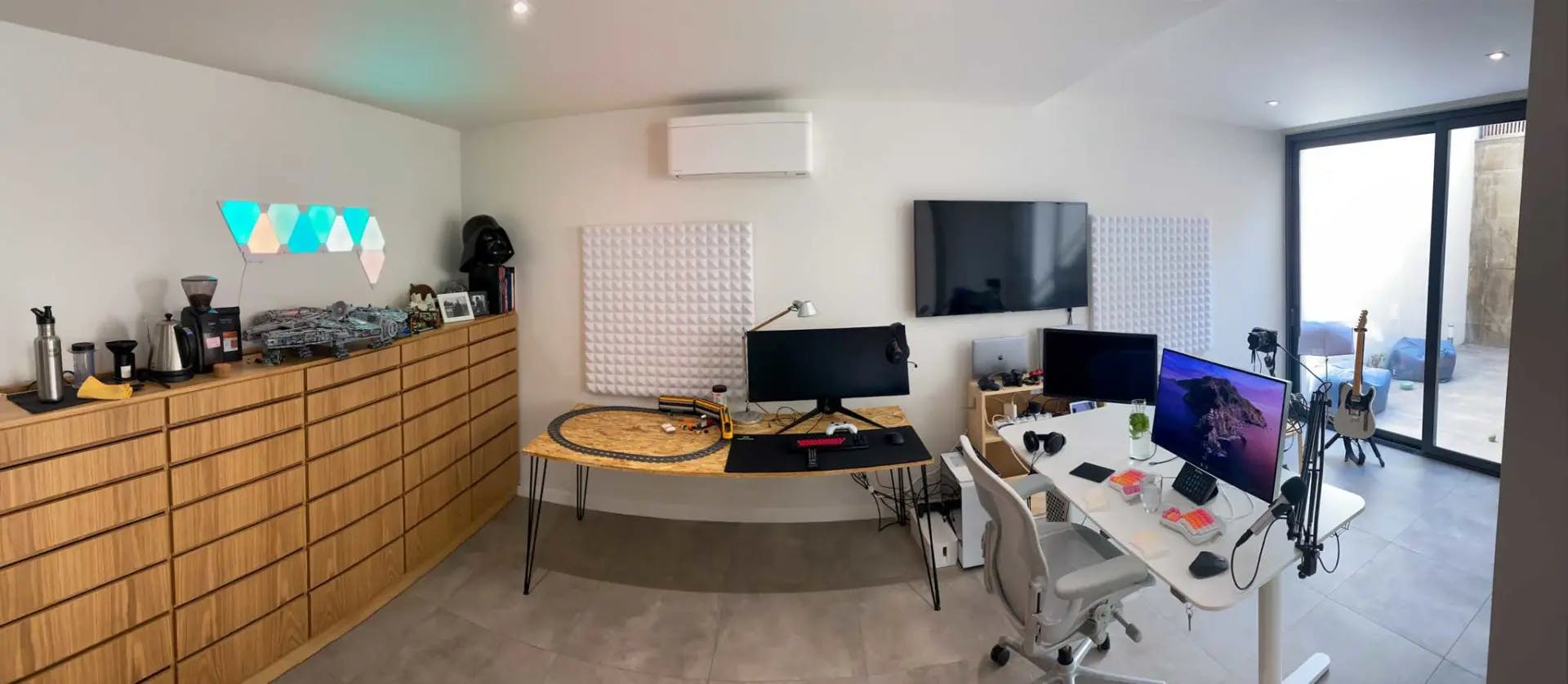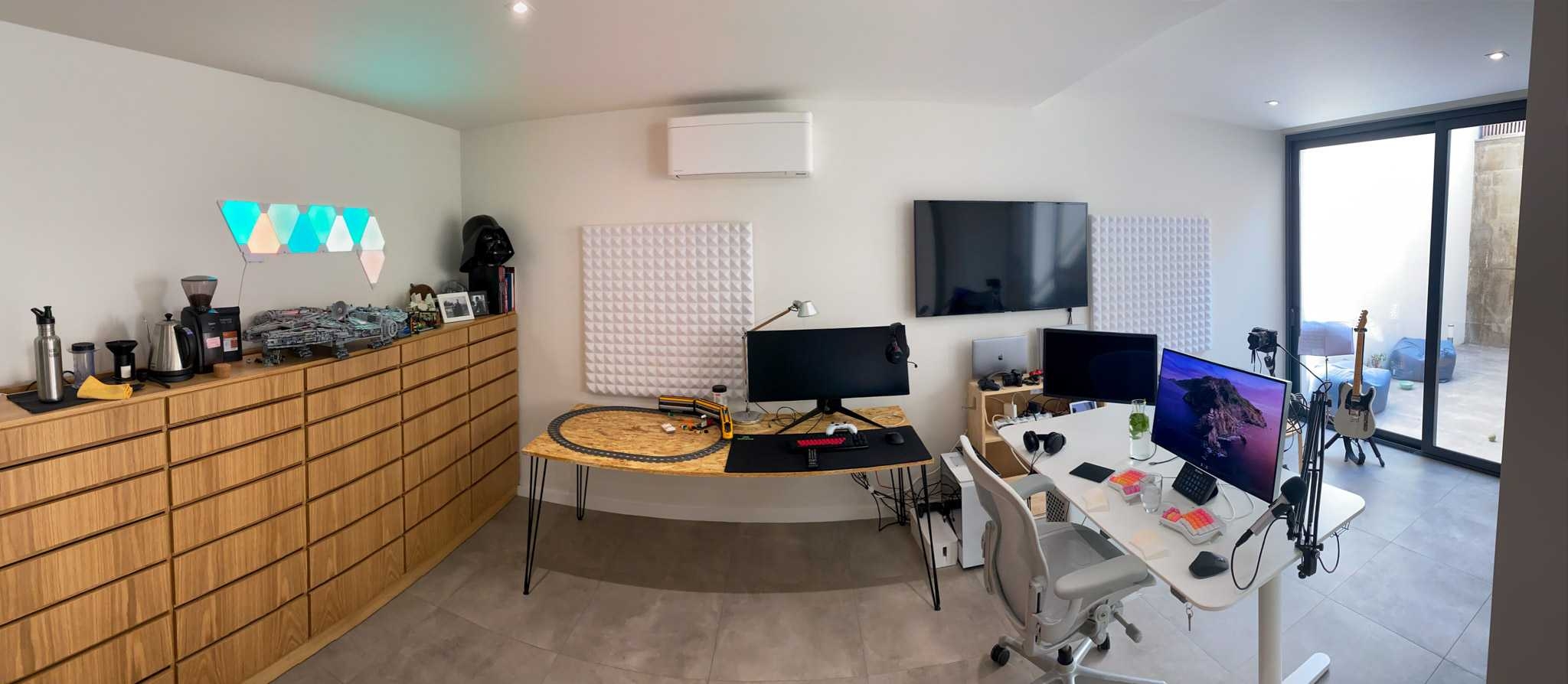
Product Updates — 7 min

Remote & Async Work — 9 min
At the Running Remote online conference last week, I spoke about the exciting growth of our industry and the opportunities we have to be a force for good in the world. We talked about how Remote is helping to create more remote jobs and how remote work arrangements help companies discover new talent from other countries.
During every panel and call, though, I kept getting the same questions:
“Why does your video look so good?”
“Do you moonlight as a YouTuber?”
“What does your setup look like?”
I believe in the importance of good communication, especially in remote work arrangements. My setup helps me build relationships with my team and host serious conversations with investors, business partners, and customers, but I didn’t realize how many people wanted to know the details. So, by popular demand, I am pleased to share the components of my home office and video conferencing setup.

My main machine is a Mac Pro (the rough cheese grater, 12-core, 48GB). I was using a Mac Mini with an eGPU before this, but that setup was very unreliable and quite noisy. Using the Mac Mini or any of the laptops with two 4K screens was a struggle.
I upgraded to the Mac Pro once they released the new GPU (W5700X) for it. This is a powerful machine that is super overpowered for most of the work I do at Remote, but as an avid photographer, it makes for a great no-compromise setup in combination with the Pro Display XDR.
Just to be clear, Remote didn’t sponsor this setup. This goes beyond business expenses!
I’ve used many different monitors and never felt particularly happy with any of them. After deciding to upgrade to the Mac Pro, I convinced myself that the Pro Display was a necessity. It truly is amazing and ruins all other screens. That’s my primary display for daily work.
The other display is a 4K LG Ultrafine Thunderbolt monitor. Good, but not on the same level as the Pro Display XDR.
The monitors are held by CBS Flo Dual arms, which clamp to the desk. Handy for keeping my workspace tidy.
For all those who asked why my video feed looks so clear, here is the answer.

I use a Sony a6000 with a Sony 35mm f1.8 lens as webcam. The camera has a dummy battery and is connected with a Cam Link 4K. Both of these are then hooked up to the Pro Display. The camera is mounted on a Manfrotto arm, which is clamped to the desk.
This is a bit much, but super strong and easy to work with. The mess of cables is an unfortunate side-effect.
This is what you’ll see if you call with me.

If you’ve never seen one, the Ergodox EZ is quite a sight. I cannot go back to a regular keyboard for writing. The Ergodox is more ergonomic and allows me to reach keys faster. I use the standard QWERTY layout, but all other keys are custom and involve switching layers. Mine has custom keycaps.
I use two mice. First, the Logitech MX Master 3 on my right hand for most mouse work. On the left I have a Magic Trackpad. The trackpad is superior for navigating documents, websites, and in particular design applications like Photoshop and Figma. Using the trackpad and the mouse is one of those tricks where, once you discover it, it’s hard to go back.
The little thing under my screen is a Stream Deck. I use this to activate automations that I mostly make with Keyboard Maestro. I have some that mute/unmute me or others. I can control the lights in my office with it, hide and rearrange applications, and, depending on the application, run all sort of custom commands and automations. For example, one of the buttons takes the 2FA code from Messages and pastes it in the window I am in.
I use an Audio Technica ATR2100 microphone. You can connect it with USB, but it’s better with a microphone amp/DAC, which is why I have the Tascam 2x2 attached to the bottom of my desk with velcro. I removed the brackets on the side, in case you want to do this too.
The microphone arm is more expensive than the microphone, but worth the money, as it hides the cable and is quite long. The brand is K&M.
I use Sennheiser 6XX headphones. These are comfortable, open-back headphones. I never use Bluetooth or noise cancelling headphones at home, as I find the sound quality poor and Bluetooth a pain to use. Occasionally I use AirPods for calls, as it looks less silly than the giant headphones. In the future, I hope to upgrade to something like Ultimate Ears, as they give the best of all the worlds.
The headphones are powered by a Fiio K3, which I don’t recommend, as it has USB issues, but it has a big volume button and is small. It’s velcro-ed to be at my left hand for easy changing of volume.
The desk is the old electric standing desk from Ikea. I’ve never had issues with it, but I will change the top to be wooden in the future. I’ve mounted several cable management brackets to the back. It also has a bracket for my Mac Mini on the bottom, which now powers the TV.
I use a Herman Miller Aeron. It’s my favorite chair. I recommend trying any chair before buying, though!
The room is lit with Philips Hue spotlights. Because the camera is very light-sensitive, I haven’t found the need for dedicated light. In cases where it makes sense to have a bit more light, I can adjust the light in the room easily using my phone or stream deck.
I also have a number of automations related to the lights. For example, the lights all turn off at 11 p.m. to remind me to go to bed.
It has mint and lemon in it.
The second desk I originally put together to build the LEGO Millenium Falcon on. It is now repurposed for my gaming PC, which you can just see on the right of it.
The PC is pretty powerful: most notably, it has a RTX 2080 Ti. It’s connected to an ultrawide Alienware display, which I mostly got to be able to run >120hz games at 4K. The keyboard is a Razer Huntsman with custom keycaps, and the mouse is a Razer Basilisk X Hyperspeed. The mouse in particular is very good for a wireless mouse. The headphones are HyperX … something. They are not very good and always run out of battery, but I don’t use them often enough to warrant an upgrade.
I like almost all games, but have been really into Satisfactory lately.
The desk also has a LEGO train.
The big cabinet is a design by my partner and was custom made. It has a trough on the top for cables and enough space for years of being a nerd. We’re planning to move next year, and I’ll have to leave it behind, because it’s giant and very heavy.
I can easily find what’s in the cabinet. I have an Airtable with its contents (e.g. top left is A1, which has all USB-C dongles).
On top is a coffee station (Aeropress and a Baratza Encore), a Millennium Falcon, and a bunch of memorabilia. The Darth Vader helmet was a gift from Marcelo and can be worn. I mostly drink espresso-based drinks, which I make upstairs.
The lights above the cabinet are Nanoleaf light panels. They integrate with everything, and you can almost endlessly extend them.
The foamy things on the walls are anechoic foam panels. They stop sound waves from traveling through the room. The walls on the right are large glass panels, which reflect sound quite well. These panels help reduce that.

In the open closet under the TV I have all power and a network switch. All computers are on wired internet connections, which is a very cheap way to improve your connection.
You can spot a PS4 and a dock for a Switch. There’s a 4K television on the wall I use for both the PS4 and for displaying dashboards.
The white box is the air conditioning. We live in Portugal, and it can get really hot here.
I have a few guitars behind the desk.
Hidden from the pictures are an exercise bike and a closet with a turntable.
Outside you see two bean bags, where our dogs, Maçã and Limão, like to chill. They are no longer allowed in my office after a number of “accidents.”
When I travel, I use a Macbook Pro 13” with a foldable stand, the Planck EZ, and an external mouse, all packed in my Peak Design bag. For audio on the go, I just use Airpods Pro, which work well in almost any setting.
And there you have it: an exhaustive list of everything I use to stay productive while I work and to make my video calls as crisp as possible. It took me years to build this room and to figure out which products to use, so if you’re starting from scratch, don’t get overwhelmed. Focus on what matters most to you, start there, and build up as you go.
I loved speaking with all the panelists and guests at Running Remote. If you need help onboarding and paying your international employees, we would love to talk with you as well. Click the form below to see how we can help!
Subscribe to receive the latest
Remote blog posts and updates in your inbox.

Product Updates — 7 min

Global Payroll — 2 min

Minimum Wage & Compensation — 7 min

Newsroom — 5 min